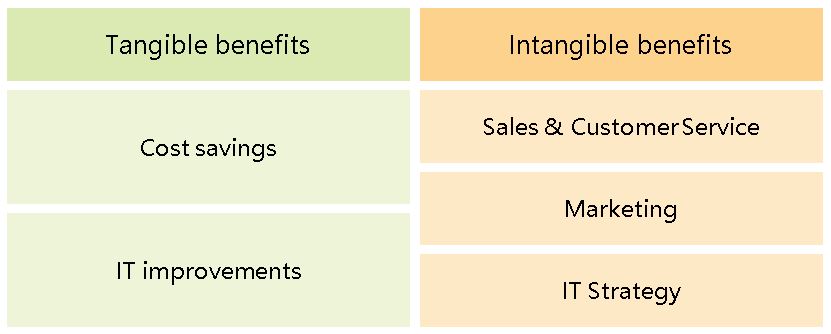
If you can see the benefits that Floe can bring to any organisation running SAP, then you may need to make a business case for your manager. Here are some of our thoughts about how to approach this.
Business Drivers and the SAP Email Problem
Over the past couple of decades we’ve seen movement away from printed and posted output to electronic commerce. Some of the B2B communication takes place as purely electronic messaging using EDI and interfacing technologies. Some of the B2C communication takes place purely within mobile or desktop apps using notification messages. The rest of the business communication is conducted using email, and the amount of this is enormous.
In addition, the proliferation of connected mobile devices has led to an enormous increase in user expectation of engaging business communication: If Amazon can send order confirmations by email that include images and marketing content, then why does SAP still send out plan emails with PDF attachments?
The SAP Email Problem is that
- SAP Emails don’t look very good, and
- HTML Emails are difficult to develop in SAP.
The traditional SAP approach has been to convert print output to PDF and send this as an attachment to an e-mail. However, customers expect rich content in the body of e-mail itself rather than in a separately attached file. Moreover, PDF attachments are large and get caught in corporate firewalls.
When SAP does send out an email (for example, for document output or workflow process notification) the resulting e-mails have little or no process data within the email body.
This defines the need for Floe, which provides the functionality to build emails with rich content easily within SAP.
Intangible benefits of better SAP emails
Floe enables you to build better SAP Emails. This means you can:
- Produce top-quality email communication for your business communities.
- Replace your existing plain emails with dynamic, personalised, graphical content. Include branding, social media links and information tailored to each individual recipient.
- Extend your SAP UX strategy beyond SAP Fiori.
This brings benefits for sales & customer service, marketing and IT.
- Deliver an exceptional experience for your business community.
- Provide better service, keeping customers informed in an easily consumable format.
- Offer promotions and incentives, which can be tailored to each recipient, increasing the likelihood of more sales.
- Through careful design you can reinforce your brand and champion your values.
- Through additional content and links you can educate your business community and drive website traffic, which in turn can improve search engine optimization.
- Through social media links and content you can cultivate your own social media followers and fan club.
- If you have a digital transformation strategy you can help deliver this by reaching more user touch-points.
- Better internal emails also contribute to your SAP UX strategy.
So how do you measure an intangible benefit? Well, of course you can’t; that’s what makes it intangible. But you can consider the impact on your digital transformation strategy and your overall investment in that. You can consider the cost of your marketing campaigns. The value of happy and loyal customers cannot be wholly attributed to your customer communication, but emails do form part of your shop window: they provide the opportunity for recipients to take action easily.
It is important to consider that your business case for Floe may be supported entirely by these intangible benefits.
Tangible benefits that Floe can provide
There are a number of tangible benefits that you might be able to realise depending on your use case. Introducing Floe may enable one or more cost savings, such as:
- Reduced cost of printing and postage.
If Floe is introduced as part of an initiative to move more customers to email.
- Reduced cost of 3rd party email solutions.
If Floe is introduced to replace a 3rd party solution.
- Reduced cost of document storage.
If Floe is introduced to replace PDF output with HTML email then you will see an enormous reduction in the size of documents to be stored.
- Reduced cost of SAP output / correspondence maintenance.
As changes can be made more quickly, and often by business users, then there will be a reduction in the cost of ongoing maintenance for SAPScripts, Smartforms and Adobe forms. In order to compare the relative level of effort you can install a Floe trial licence.
Depending on your circumstances you might find a business case for Floe based purely on cost savings. Other tangible benefits are focussed on IT improvements, specifically where PDF attachments are replaced with HTML emails.
The benefit of using the email body for document output instead of using a PDF attachment.
Firstly the email size is smaller – a lot smaller. That means that there are benefits down the whole chain: Your SAP system, your email server, the recipient’s email server, and the recipient’s email client.
One large customer reckoned that they could make a business case for Floe based on the database savings alone.
And of course it’s faster: Faster to send, faster to receive, faster to open. And so we’re improving the experience of dealing with users – and that’s part of a digital transformation strategy.
This might like ‘small beer’ but can offer real benefit when the number of emails is high.
- Reduced work for email server.
As each email is much smaller (typically more than 50 times smaller) then the amount of processing power to process each email is greatly reduced.
- Reduced database size for email server.
As each email is much smaller, the email database size will be reduced.
- Fast output performance.
As there is no PDF rendering, there is a huge performance improvement within the SAP system.
- No separate hardware required.
Floe emails are rendered on the SAP ABAP stack, so no JAVA stack or separate SAP instance is required.
- No firewall issues.
Since no attachments need to be included.
- Much smaller data packet to send.
The bandwidth required to send and receive each email is reduced, freeing up much-needed bandwidth for other tasks.
- Much smaller data storage required.
The email document can be saved in SAP or in a separate content server with greatly reduced storage requirements.
Floe Benefit Model
The tangible and intangible benefits can be combined into the Floe Benefit Model. Using this simple model you should be able to ascertain the particular value that Floe can bring to your organisation.

At this stage you should consider what internal projects that are already planned or underway can be supported by Floe: Floe can be treated as an inexpensive add-on to many projects.
Comparing the value captured in the Floe Benefit Model with the annual cost of Floe should show that implementing Floe is an easy decision to make.
Floe won’t save (or make) every organisation millions, but it is priced so that every single SAP customer should have a business case to implement Floe and see benefits really quickly.






Leave A Comment
You must be logged in to post a comment.